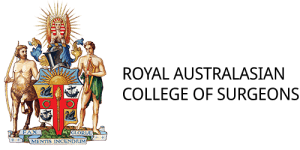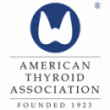PARATHYROIDECTOMY PATIENT INFORMATION
Specialist Parathyroid Surgeon in Canberra
Dr Ardalan Ebrahimi is one of the few specialist Parathyroid (Endocrine) Surgeons based in Canberra with extensive experience in minimally invasive parathyroidectomy. The patient information below will help you learn more about the parathyroid glands, hyperparathyroidism, the reasons for needing parathyroid surgery, what to expect before, during and after parathyroidectomy, as well as answers to frequently asked questions.
Dr Ebrahimi's approach to parathyroid surgery
The nerves to the voice box (recurrent laryngeal nerves) sit right next to the parathyroid glands. During parathyroidectomy, the risk of nerve injury and resulting hoarse voice is directly correlated to the skill and experience of your surgeon. Dr Ebrahimi minimises the risks of surgery and achieves the best possible outcomes for patients with a combination of:
- Extensive experience performing parathyroidectomy
- Routine pre-operative and post-operative vocal cord assessment using a state of the art fibre optic nasendoscope in the office
- Routine use of intraoperative nerve integrity monitoring for all thyroid procedures.
- Meticulous surgical technique
- Use of loupe magnification and a headlight to enhance visualisation
What are the parathyroid glands?
The parathyroid glands make parathyroid hormone (PTH), which controls the calcium levels in your blood. There are usually four parathyroid glands in the neck, each about the size of a grain of rice and sitting near the thyroid. PTH raises blood calcium levels by dissolving calcium from the bones into the bloodstream, increasing how much calcium is absorbed in the gut and decreasing calcium loss from the kidneys. Calcium is critical for the health of your bones, nerves, muscles and heart.
What is primary hyperparathyroidism?
Primary hyperparathyroidism is a condition in which one or more of the parathyroid glands are overactive and leads to raised calcium levels in the blood. The condition is usually seen in middle-aged women, but can occur at any age in both men and women. Although hyperparathyroidism can occasionally run in families or be related to radiation exposure, in most patients we don’t know why they develop the condition. In 85% of patients, the problem is a single parathyroid adenoma (this is an enlarged benign parathyroid tumour) whilst in 15% there are multiple abnormal glands. Parathyroid cancer can occur but is very rare.
For your consultation, we will need the following results:
- Blood tests: corrected calcium, PTH, vitamin D, kidney function (creatinine and eGFR)
- Urine tests: 24 hour urinary calcium
- Scans: at least one of parathyroid ultrasound, parathyroid sestamibi scan, 4D parathyroid CT (Please note the diagnosis of primary hyperparathyroidism is based on blood and urine tests. Scans are not used for the diagnosis of primary hyperparathyroidism and can be completely normal in some patients. Instead they are performed to help localize the problem parathyroid gland(s) when planning for surgery.)
What are the symptoms of primary hyperparathyroidism?
You may not notice any symptoms at all and have the condition diagnosed after high calcium levels are picked up incidentally during routine blood tests.
Patients with primary hyperparathyroidism may develop:
- Weak bones (osteopenia or osteoporosis) which may fracture easily
- Kidney stones or renal failure
- Tiredness
- Memory or concentration difficulties
- Generalised non-specific bone, joint and muscle aches
- Depression or low mood
- Abdominal pain or constipation
- Pancreatitis or stomach ulcers
- Feeling very thirsty and passing urine frequently
- Weak or easily tired muscles
- High blood pressure
What are the treatment options for primary hyperparathyroidism?
SURGERY (PARATHYROIDECTOMY)
The only treatment for primary hyperparathyroidism is an operation called Parathyroidectomy to remove the abnormal parathyroid gland(s). In experienced hands, the cure rates with parathyroid surgery are 95-98% and the operation is very safe with most patients recovering quickly.
If pre-operative scans find a single abnormal calcium gland, you may be a candidate for minimally invasive parathyroidectomy (MIP). This is a focused operation involving removal of the parathyroid adenoma through a small incision (2-3cm) in your lower neck and takes less than an hour. If the abnormal gland is not seen on scans, you will need a four gland parathyroid exploration, which involves a slightly longer cut through which all four parathyroid glands can be found and the enlarged one(s) removed.
OBSERVATION
If you have mild hyperparathyroidism with no symptoms and no end organ effects (such as osteoporosis or kidney stones), you can elect to have the condition monitored.
Some doctors do not understand hyperparathyroidism very well, and do not always refer patients to discuss parathyroid surgery, assuming the disease is mild and the surgery is risky. This approach can be a mistake at times. There is good evidence showing successful surgery for hyperparathyroidism improves bone strength, may decrease the risk of fractures, and in many patients, improves quality of life through improved energy, memory and concentration, reduced aches and pains, better sleep, and other symptoms caused by high blood calcium.
Will I have an anaesthetic?
Yes, all parathyroid surgery is performed under a general anaesthetic (you will be asleep). You should have nothing to eat or drink from midnight on the day before surgery (unless advised differently by your health care team) and should leave valuables and jewellery at home.
The side effects of the anaesthetic may include nausea and sore throat, which settle down soon after surgery and will be treated with medications. General anaesthetic is extremely safe but does carry a very small risk of serious complications.
Will I have a scar from parathyroidectomy?
You will have a scar, which may be red for a few months, before fading to a thin line. The parathyroidectomy wound is closed with dissolving stitches under the skin so you will not need to have them removed. Dr Ebrahimi will offer a key-hole operation (known as minimally invasive parathyroidectomy) with a 2-3cm incision where possible. The majority of patients can safely have this procedure but it does depend on whether your scan results have confidently identified the problem parathyroid gland. If the scans cannot localize the problem before parathyroid surgery, you will need a four gland parathyroid exploration with a 4-5cm incision to assess all four glands. When possible, the incision is placed in a skin crease to make it inconspicuous and it is kept as small as possible in all cases.
Very rarely, the scar can become thickened and red (keloid scar). This results mainly from your skin type and a predisposition to keloid scarring. Let us know if you tend to scar badly as steps can be taken to reduce the risk of keloid. You will be given instructions on managing the scar after surgery to maximize the chances that it heals nicely.
Can I have a minimally invasive parathyroidectomy (MIP)?
Minimally invasive parathyroidectomy (MIP) is performed via a short neck incision (2-3cm) with the advantages of less scarring, a better cosmetic result and less post-operative pain. Dr Ebrahimi is able to successfully use a minimally invasive approach in the vast majority of patients but this depends on confident localization of the problem gland on your pre-operative scans.
Will I have pain after parathyroid surgery?
Patients are always surprised at how little pain they have after parathyroidectomy. Most patients take panadol to keep them comfortable at home but you will be given a prescription for something stronger in the first few days in case you need it. Most patients notice a sore throat for a few days because of the breathing tube placed during the operation. Stiffness or pain in the back of the neck sometimes occurs because of the position of the neck during surgery and may last a week or two.
What can I expect during and after parathyroidectomy?
The recovery from parathyroid surgery is smooth and relatively quick for most patients.
On the day of surgery you will arrive at hospital and be prepared for surgery. You must ensure you’ve had nothing to eat or drink for 6 hours before surgery. You will meet your anaesthetist before the surgery and Dr Ebrahimi will see you also. The surgery usually takes 1 hour if it is a minimally invasive parathyroidectomy, but may take 2-3 hours if you require a four gland exploration. After surgery, you will slowly wake up in the recovery room. Once you are fully awake, you will be moved to a bed in a hospital room where you will be able to eat and drink as you wish. Some patients experience nausea after anaesthetic, which will be treated with medications. This usually settles by the next morning. Most patients having parathyroidectomy are hospitalized overnight and discharged on the morning following surgery.
Normal activity can begin on the first post-operative day. Don’t be afraid to move your neck. Gently flexing and stretching your neck muscles will prevent stiffness. Vigorous sports, swimming and activities that include heavy lifting should be delayed for at least 2 weeks. Most patients can safely drive again 5-7 days after parathyroidectomy, and sometimes earlier, but this depends on your comfort levels turning your neck. You should be able to return to work after 1-2 weeks unless your job requires strenuous manual labour in which case you may need 3-4 weeks.
Are there any risks from parathyroid surgery?
In the hands on an experienced parathyroid surgeon, the procedure is very safe, however, all surgery carries risk. Some risks are common to any surgery such as infection, pneumonia, or blood clots in the legs or lungs. However, these are very rare after parathyroidectomy. Risks specific to parathyroid surgery you should be aware of include the following:
Conversion to Four Gland Exploration
Even if the pre-operative scans located the overactive parathyroid gland and you are having minimally invasive parathyroidectomy, they are occasionally incorrect or it proves difficult to find the abnormal gland during surgery. Because of this, we might need to make the cut a little longer and check all four parathyroid glands to ensure we find the problem. The chances of needing to do this are about 5%. If the abnormal parathyroid gland still cannot be found, we occasionally need to remove half of the thyroid and the thymus, since parathyroid adenomas can be hidden in either location.
Persistent or Recurrent Hyperparathyroidism
The surgery may not cure primary hyperparathyroidism in up 2-5% of patients. The most common reason is another enlarged parathyroid that was not seen on the scans. In this situation, a second operation may be recommended to find any residual abnormal parathyroid glands.
Bleeding
This is rare (<0.5%) after parathyroidectomy but even a small amount of blood collecting around the throat can cause breathing problems and be an emergency. If this happens, it may be necessary to have a second operation to remove the blood.
Voice Change
The nerves to the voice box (recurrent laryngeal nerves) run next to the parathyroid glands in the neck. Dr Ebrahimi uses a special nerve monitor during thyroid surgery with a neuromonitor and neurostimulator to ensure all the nerves are identified and kept safe.
Very minor voice change can occur in some patients after parathyroid surgery despite the nerves working normally, but this almost always gets better with time. Injury to the recurrent laryngeal nerves (main nerves for the voice box) can cause paralysis of the vocal cord resulting in a breathy hoarse voice that is weak and tires easily. Dr Ebrahimi minimizes this risk with the combination of years of experience, meticulous technique, nerve monitoring and surgery performed under loupe magnification. He has had no cases of nerve injury after parathyroidectomy to date but it is not possible to guarantee no complications and patients should understand there is very small risk of permanent voice change. Injury to less important nerves (external laryngeal nerve) supplying the voice-box may lead to more subtle voice changes such as mild huskiness, difficulty projecting the voice or an inability to sing high notes. Again, if this occurs it often gets better with time and permanent problems are rare.
Low Blood Calcium
Occasionally, the calcium levels may drop too much after surgery. We call this rebound hypocalcaemia. This can happen because the remaining parathyroid glands may be lazy and take time to start working again and also the bones may absorb more calcium from the blood. If your calcium is low you might notice tingling in your lips, fingers and toes, or even muscle cramps. To prevent low calcium, we may give you calcium tablets for a few weeks but this depends on the blood tests after surgery. In most patients the calcium levels normalize after a few weeks. Permanent low calcium requiring tablets for life is rare (less than 2%).
Wound Infection
This is uncommon and usually easily treated with oral antibiotics
Seroma
This is a painless swelling due to fluid collecting under the skin in the first week or two after surgery. It occurs in less than 5% of patients but is more common with large goiters. It is treated simply by draining the fluid in the office.
Keloid Scar
These are thick, raised red scars. It is rare in Caucasians but relatively common in patients of Asian or African descent, particularly when young.














